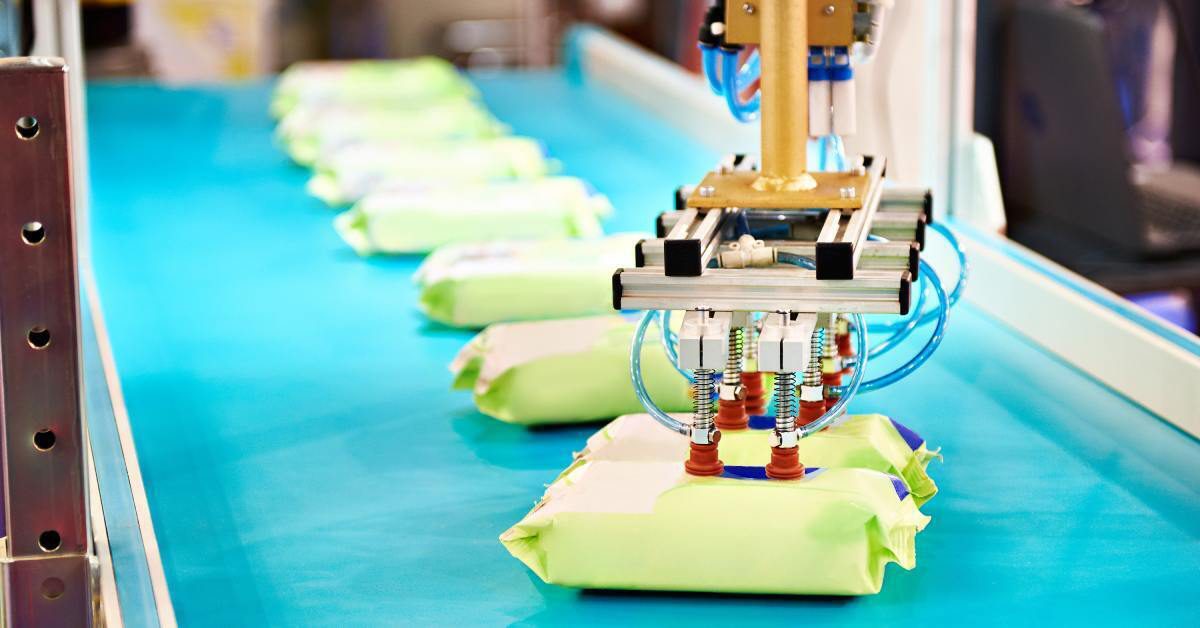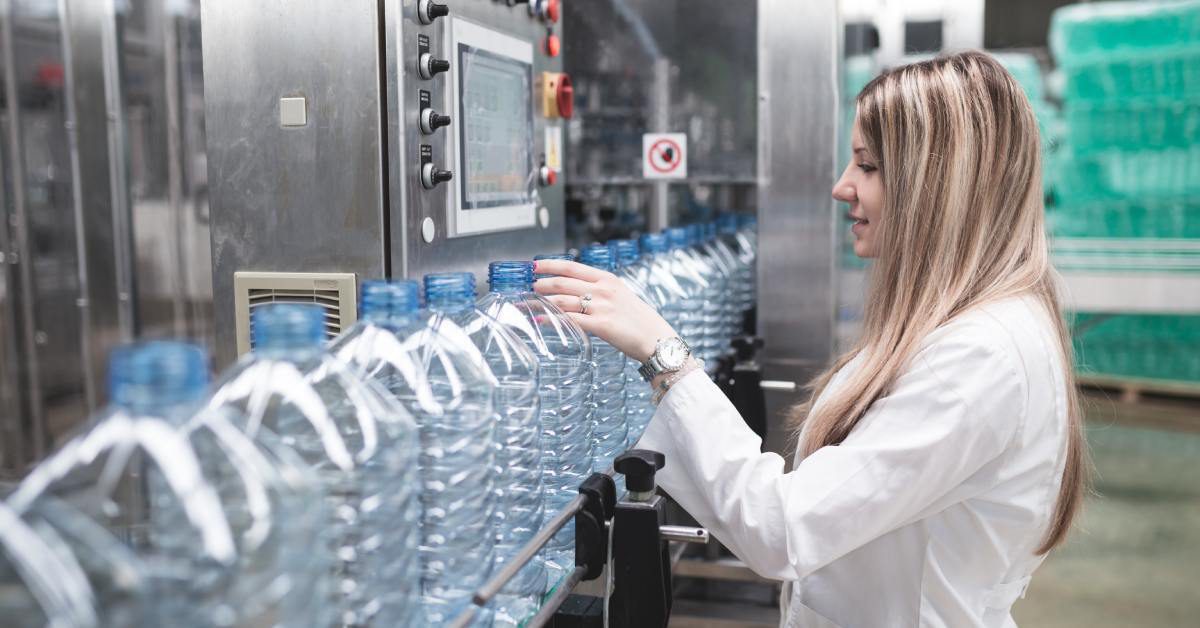Search
Additional Links Contact Us- Phone: (800) 423-4198
- Toll-Free: (815) 885-1900
- Email: [email protected]

ProMach is your partner from start to finish. Our product brands are grouped into distinct business lines that make the most sense to our customers, covering every function of the production line: Filling, Bottling & Capping, Decorative Labeling, Flexibles & Trays, Pharma, Handling & Sterilizing, Labeling & Coding, Robotics & End of Line, and Systems & Integration.
learn more
High product demand hits faster than most businesses expect. Orders surge, deadlines tighten, and suddenly your packaging line becomes the bottleneck that determines whether you’ll capitalize on demand or watch opportunities slip away. Some managers respond by panic-buying equipment and supplies, only to find themselves stuck with excess inventory and a depleted budget when the rush ends. Let’s get into how to prepare packaging lines for peak season without overbuying resources.
Start by analyzing last year’s peak season data alongside this year’s projected growth. Look at your highest volume days, not just monthly averages. Daily spikes often reveal the real stress points in your operation. Factor in new product lines, additional sales channels, and market expansion when estimating demand.
Don’t assume you need to handle 100% of peak volume internally. Many successful companies diversify their approach, supporting 70–80% of peak demand while partnering with co-packers for overflow. This strategy reduces capital investment while maintaining control over quality and timing.
Examine your packaging line’s actual throughput during previous busy periods. Machine specifications often differ from their actual performance, especially when operators work longer shifts or handle multiple product variations. Track downtime causes, changeover times, and quality issues that slow production.
Document which products created bottlenecks and why. Some items might require more complex packaging processes, while others could benefit from advanced preparation. These patterns help you make targeted improvements rather than broad equipment upgrades.
Schedule preventive maintenance before the rush. Replace worn parts, calibrate sensors, and update software. A well-maintained machine runs faster and more reliably than a neglected one, regardless of age.
Consider minor upgrades that boost throughput without major capital investment. You can add conveyor sections, improve product feeding mechanisms, or install better monitoring systems to increase efficiency.
Take a tour of your packaging lines during normal operations to identify movement waste. Operators shouldn’t need to walk far for supplies, tools, or quality checks. Try to reorganize workstations and supply locations to reduce cycle times without spending money on new machinery.
Look for opportunities to eliminate manual steps through simple automation. Basic sensors, pneumatic actuators, or timing controls might replace repetitive manual tasks.

AI-driven automation can enhance efficiency by reducing manual interventions. For instance, vision-based AI systems can identify defective products and control quality. Robotics excel in tasks such as carton assembly, product sorting, and pallet stacking, freeing workers for more strategic tasks.
HFFS machines (horizontal form fill seal machines) are smart packaging systems that also contribute to efficiency by monitoring product handling. They provide data on temperature, humidity, and other environmental factors during packaging. This technology minimizes the risk of product spoilage, particularly for perishable goods, while improving traceability throughout the supply chain.
Success during peak seasons depends heavily on having enough trained personnel. However, hiring full-time employees months before the rush creates unnecessary labor expenses. Instead, develop relationships with temporary staffing agencies that specialize in manufacturing and packaging roles.
Cross-train existing employees in multiple packaging line positions. This flexibility allows you to shift workers where they’re needed most and provides backup coverage when regular operators are absent. Document standard operating procedures clearly so temporary workers can contribute.
Design quick-start training modules that focus on safety and basic operation skills. Temporary workers don’t need to understand every machine’s details, but they must work safely and follow quality standards. Prepare training materials, practice stations, and competency checklists for your personnel.
You could also assign experienced operators as mentors for new temporary workers. This buddy system accelerates learning while maintaining quality standards. Plan for higher supervision ratios to effectively support additional personnel.
To effectively manage inventory, focus on balancing material availability with storage costs. Usage patterns and lead times will influence how much stock you truly need and when you need it.
Collaborate with suppliers to set up delivery schedules for high-volume materials. For instance, if you manufacture seasonal products, work with your supplier to deliver materials weekly rather than all at once, so you don’t tie up storage space. By aligning supply delivery with actual demand, you can optimize inventory levels and still meet customer needs efficiently.
Modern packaging lines benefit from collecting data and using analysis tools to improve performance. Sensors and monitoring systems can track machine efficiency, product quality, and throughput rates.
You could also use enterprise resource planning software to coordinate production scheduling, inventory management, and supplier communications. Accurate information helps troubleshoot every aspect of your operation to prevent production barriers.
Vibration sensors, temperature monitors, and oil analysis programs identify problems that may develop. Partner with equipment manufacturers or service providers who offer remote monitoring services. These programs use internet-connected sensors to track machine health.
Reliable co-packers can help you handle overflow production when your internal capacity reaches limits. Aim to develop relationships that contribute to quality agreements, pricing structures, and communication protocols. Having these partnerships in place provides flexibility without fixed expenses.
Evaluate co-packers’ capabilities, capacity, and quality standards carefully. Visit their facilities, review their certifications, and request references from similar clients. The right partner should complement your capabilities.
Create detailed procedures for transferring and integrating overflow production with co-packers, including production schedules, material sourcing, and quality control measures. A seamless transition between in-house and outsourced production helps you maintain consistent product quality.

One way to address potential disruptions is by hosting scenario planning workshops. These sessions bring together key stakeholders, such as operations managers, supply chain specialists, and maintenance teams, to simulate potential challenges. For instance, participants might outline their responses to a key supplier delay or a major packaging line malfunction.
Building on the insights gained during scenario planning, businesses should establish cross-functional crisis teams to handle emergencies. These teams, comprising members from operations, procurement, quality control, and logistics, ensure that all aspects of the business are represented and addressed. For example, while a logistics expert focuses on rerouting shipments, a quality control representative checks that products are up to standard.
By combining technologies with robust contingency plans, you can prepare your packaging line for peak seasons without overbuying equipment. At HMC Products, we’re here to help you achieve your operational goals and elevate your product offerings. Contact us today to explore how our HFFS machines can create a seamless and efficient production process tailored to your unique needs.